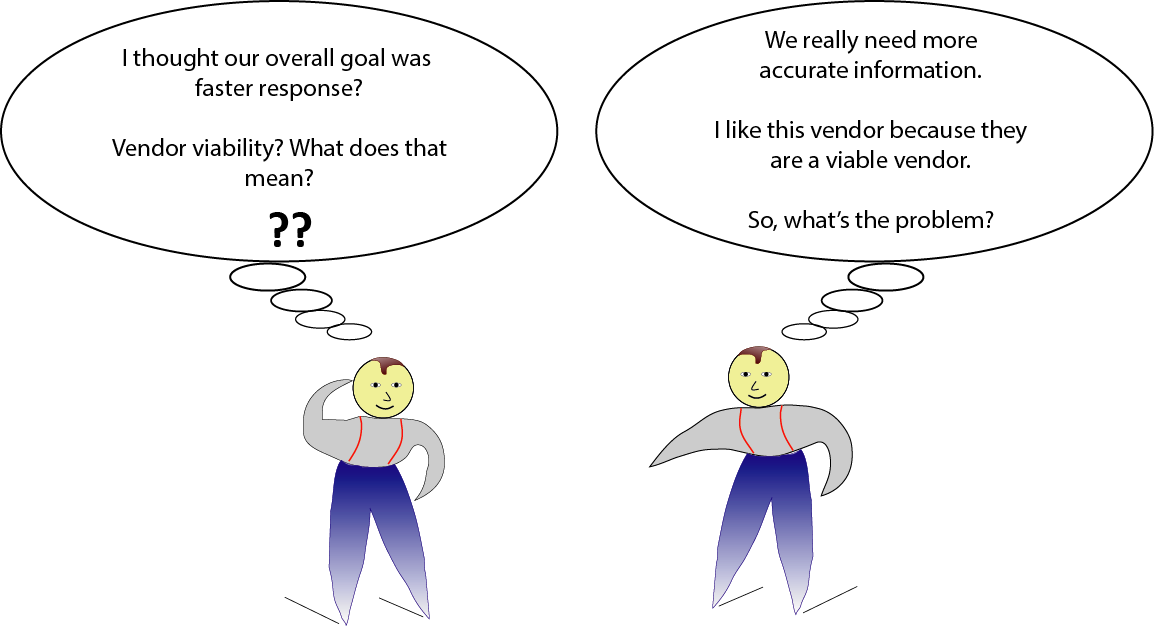November 2018 - The FoCuSeD™ Facilitator eNewsletter

Poor Process Skills | Gary Rush Facilitation
A weakness that many Facilitators, meeting leaders, and project managers, to name a few, have in common is poor process skills. They struggle when defining a process for the group to follow to ensure well thought-out outcomes. So let’s focus on defining a structured thought-process that helps get you from point A to point B.
How often have you been in a workshop or meeting where people work together well, but can’t get from point A to point B? It isn’t because they can’t, it’s because something is missing – a structured thought process. For example, a group is choosing between vendors for a project, but they disagree about the criteria. There are two (2) major reasons why most groups disagree in this situation:
- They disagree about what to evaluate because they lack an overarching goal to guide the criteria.
OR
- They disagree about “subjective” criteria (e.g., vendor viability) instead of defining measurable criteria.
Defining a Structured Process
A structured process allows you to organize thoughts in a logical progression. It allows you to deliberately, logically, and methodically organize thoughts by thinking through “how to” define the problem before jumping to a solution.
Thought Patterns
When I’m designing an agenda, I look at thought patterns – how we think through something. The following thought patterns help me set the overall context – the big picture outcome, e.g., Symptoms, Vision, and Overall Goal, then step through what is needed to think about “how to” get from point A to point B – the outcome.
- For Problem-Solving:
- Symptoms
 Cause
Cause  Solution
Solution - Problem Statement
 Objectives à Solutions
Objectives à Solutions  Select Solution
Select Solution
- Symptoms
- For Setting Direction:
- Vision
 Goals
Goals  Objectives
Objectives  Tactics
Tactics - Why
 Where
Where  How
How  When
When
- Vision
- For Defining Actions:
- What
 Who
Who  When
When - What are we Doing
 What are the Barriers
What are the Barriers  What do we want to Accomplish
What do we want to Accomplish  How do we get There
How do we get There - Overall Goal
 Steps to reach Goal
Steps to reach Goal  Sequence of Steps
Sequence of Steps
- What
Questions to Think About
As I think through designing the process, I consider the following questions to ensure I’m not missing a key piece of the puzzle.
- Is the group disagreeing about Objectives?
- Yes – have them define the Overall Goal.
- Is the group disagreeing about Criteria?
- Yes – have them define a clear Objective.
- Is the group disagreeing about which is first, second, etc.?
- Yes – have them agree on the end result – the Outcome.
- Is the group stuck on how to solve a problem?
- Yes – have them agree on a clear Problem Statement.
- Is the group disagreeing about Priorities?
- Yes – have them define the Overall Goal or Objective.
- Is the group trying to solve a problem but haven’t agreed on the Root Cause?
- Ask “Why?” five times until you’ve hit the root cause, then have them agree on a clear Problem Statement.
Structured thought processes generally build top-down, i.e., they begin with a broad, overall understanding (the context) and then delve into the details. This allows me to keep groups on track and methodically enable them to achieve a well thought-out outcome.
Process skills provide deliberate, structured thought processes to develop the right outcome.![]()

